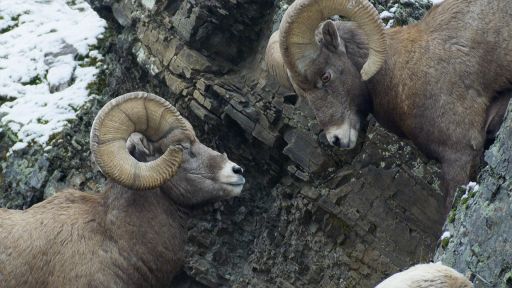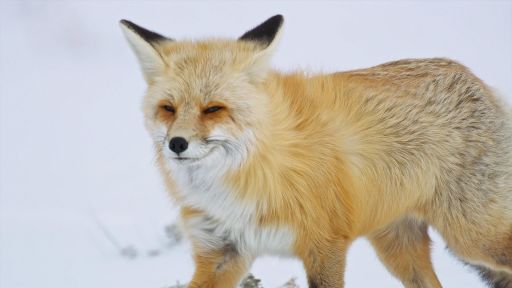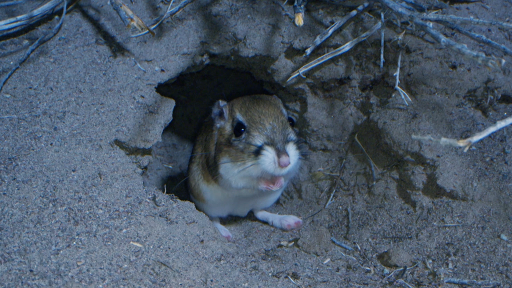PRODUCTION CREDITS
BORN IN THE ROCKIES
GROWING UP
NARRATED BY
UMA THURMAN
WRITTEN AND PRODUCED BY
JOSEPH PONTECORVO
DIRECTOR OF PHOTOGRAPHY
JOSEPH PONTECORVO
EDITED BY
BILLY MCMILLIN
MUSIC COMPOSED BY
JEREMY ZUCKERMAN
PERFORMED BY
THE BUDAPEST ART ORCHESTRA
FLUTES
GINA LUCIANI
MUSIC PREP
BRIAN HERALD
ADDITIONAL CINEMATOGRAPHY BY
ALEX COOKE
CLARK DUNBAR
DAWSON DUNNING
BENTON INSCOE
JUDY LEHMBERG
BRANDON NAVRATIL
NIMMIDA PONTECORVO
COLIN RUGGIERO
DREW RUSH
NOAH WALDRON
ASSISTANT CAMERA
NIMMIDA PONTECORVO
JORDAN HOFFMASTER
CARLY MUENCH
TYLER CARLIN
LOCATION SOUND
NIMMIDA PONTECORVO
SOUND SUPERVISOR
LEN DELOREY
SOUND EDITORS
SCOT B. CHARLES
JASON DEVORE
ONLINE EDITOR
SHANE DILLON
RE-RECORDING MIXER
LEN DELOREY
COLORIST
ERIC ROSEN
ASSISTANT EDITOR
PHILIP THANGSOMBAT
GRAPHICS
LUCY WOODWARTH
JORDAN HUFFMASTER
ASSOCIATE PRODUCER
CHELSEA FISKE
STOCK FOOTAGE
JEFF HOGAN FILMS
INSPIRE WILD MEDIA
BRETT SCHRECKENGOST PRODUCTIONS
NOAH WALDRON
POND 5
SCIENTIFIC ADVISORS
PATRICK DONNELLY
KELSEY C. KING
KEITH AUNE
JACK HOGG
FANIE PELLETIER
JOSHUA LISBON
MATTHEW SCHERTZ
FRANK T. VAN MANEN
RESEARCH ASSISTANCE
CHELSEA FISKE
NIMMIDA PONTECORVO
SPECIAL THANKS
NATIONAL PARK SERVICE
U.S. FOREST SERVICE
AMERICAN PRAIRIE RESERVE
SWAN VALLEY CONNECTIONS
MPG RANCH
MARY ANN BONNELL
PETER DUNLAEVY
DR. DAVID M. THEOBALD, EXP.
SANDRA NOLL
ERV NICHOLS
MARY SCOFIELD
ROBERT DOMENECH
TERRENCE ROTERING
TILLY AND JOE RIMENSBERGER
FOR TERRA MATER FACTUAL STUDIOS
EXECUTIVE PRODUCERS
IVO FILATSCH
SABINE HOLZER
FOR NATURE
SERIES EDITOR
JANET HESS
SENIOR PRODUCER
LAURA METZGER LYNCH
COORDINATING PRODUCER
JAYNE JUN
ASSOCIATE PRODUCER
JAMES F. BURKE
LEGAL COUNSEL
BLANCHE ROBERTSON
DIGITAL LEAD
DANIELLE BROZA
ASSOCIATE PRODUCER – DIGITAL
AMANDA SCHMIDT
SOCIAL MEDIA EDITOR
KAREN HO
AUDIENCE ENGAGEMENT
CHELSEY SAATKAMP
BUDGET CONTROLLER
JAYNE LISI
ONLINE EDITORS
CHRIS GUIDO
STACEY DOUGLASS MOVERLEY
RE-RECORDING MIXER
JON BERMAN
NARRATION RECORDIST
DON HOFFMAN
ORIGINAL SERIES PRODUCTION FUNDING PROVIDED IN PART BY
CORPORATION FOR PUBLIC BROADCASTING
ARNHOLD FOUNDATION
THE FAIRWEATHER FOUNDATION
KATE W. CASSIDY FOUNDATION
SUE AND EDGAR WACHENHEIM III
KATHY CHIAO AND KEN HAO
CHARLES ROSENBLUM
FILOMEN M. D’AGOSTINO FOUNDATION
LILLIAN GOLDMAN CHARITABLE TRUST
LEONARD AND NORMA KLORFINE
SANDRA ATLAS BASS
COLIN S. EDWARDS
GREGG PETERS MONSEES FOUNDATION
KOO AND PATRICIA YUEN
SERIES PRODUCER
BILL MURPHY
EXECUTIVE PRODUCER
FRED KAUFMAN
A PRODUCTION OF PONTECORVO PRODUCTIONS AND THE WNET GROUP IN CO-PRODUCTION WITH TERRA MATER FACTUAL STUDIOS
THIS PROGRAM WAS PRODUCED BY THIRTEEN PRODUCTIONS LLC, WHICH IS SOLELY RESPONSIBLE FOR ITS CONTENT.
© 2021 THIRTEEN PRODUCTIONS LLC
ALL RIGHTS RESERVED



